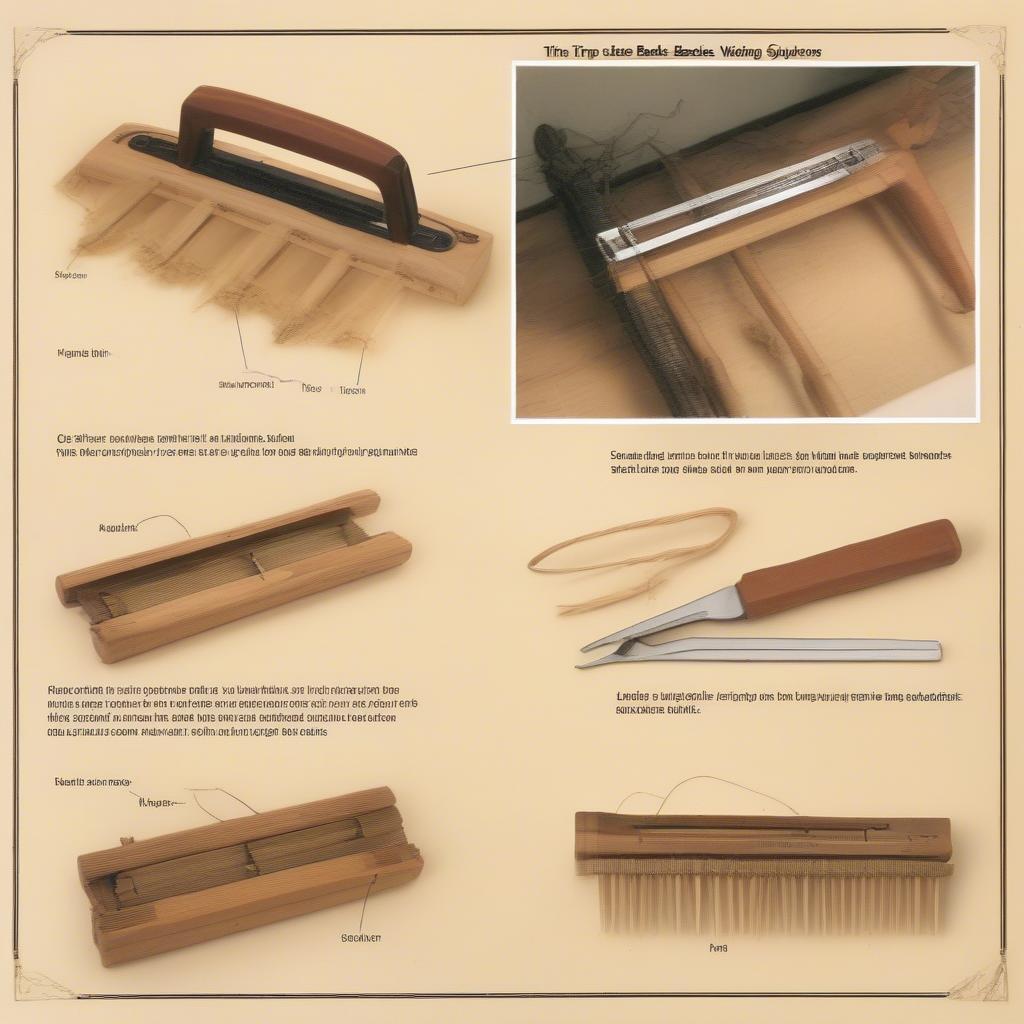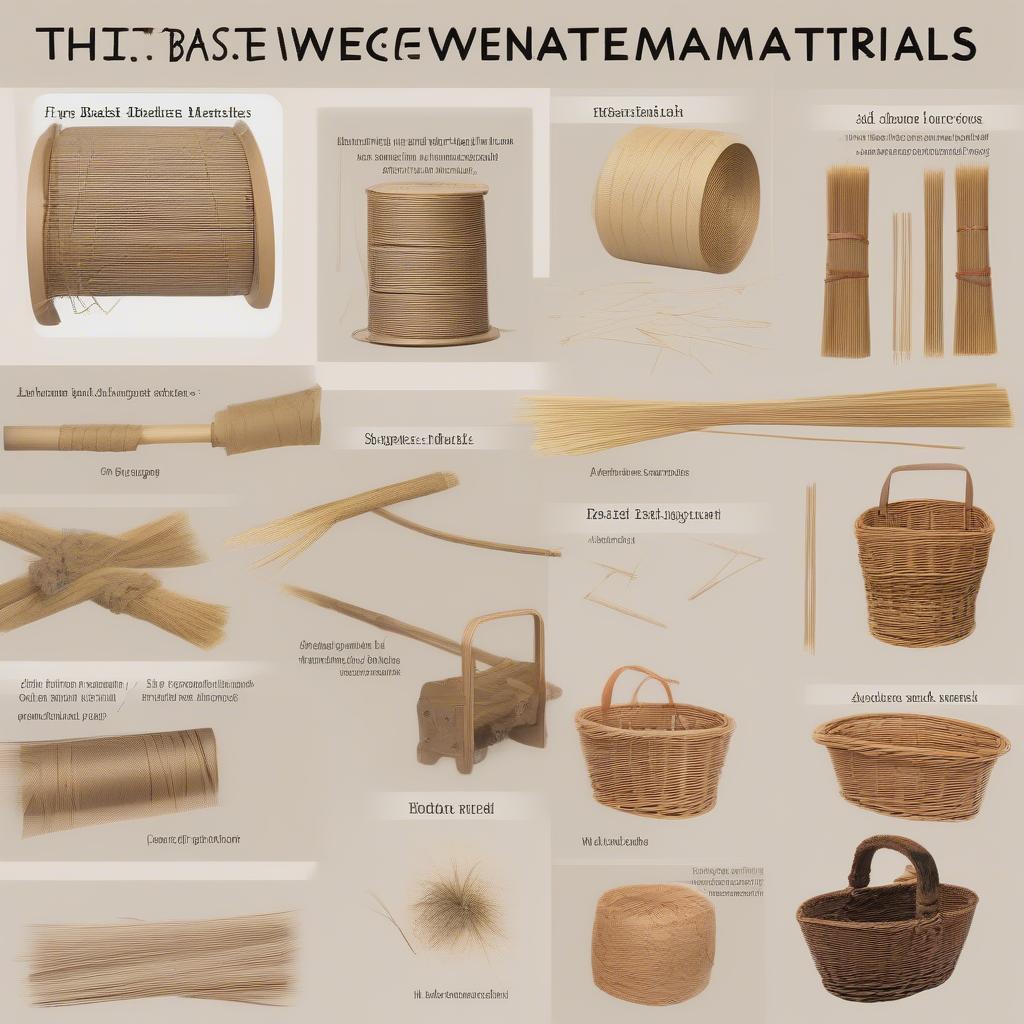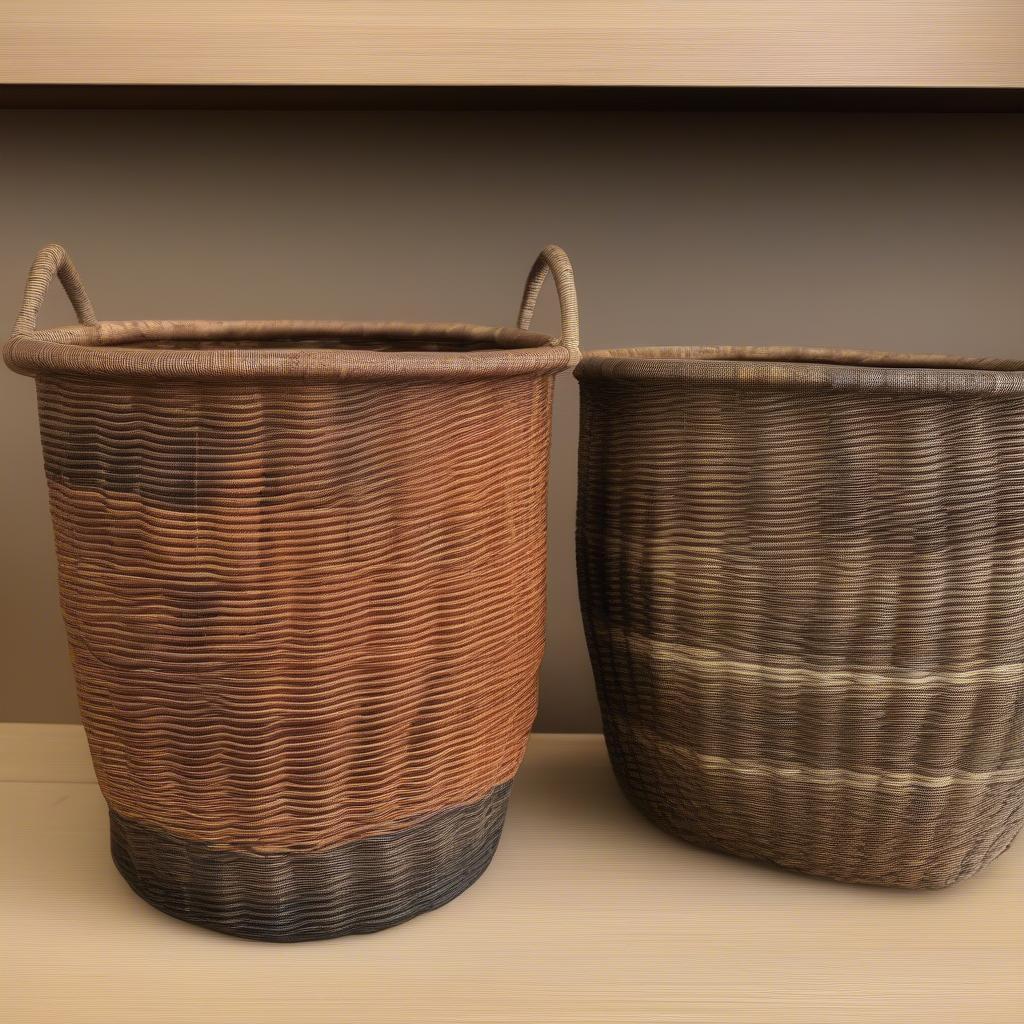Basket Weaving
Mastering the Basket Weaving Splitter: A Comprehensive Guide
Basket Weaving Splitters are essential tools for any basket weaver, whether a beginner or a seasoned pro. They allow you to create consistent, even widths in your reed or wicker, ensuring a professional and polished look for your finished baskets. This comprehensive guide will delve into everything you need to know about basket weaving splitters, from choosing the right one to mastering its use.
Types of Basket Weaving Splitters and Their Uses
Basket weaving splitters come in a variety of styles, each designed for specific purposes. Understanding the different types will help you choose the best tool for your project.
- Blade Splitters: These are the most common type and are ideal for splitting flat reed or wicker into thinner strands. They feature a sharp blade that cleanly slices through the material, allowing for precise control over the width of the strips.
- Guillotine Splitters: Similar to blade splitters, guillotine splitters offer a more robust cutting mechanism, making them suitable for thicker materials. They are especially useful for working with hardwoods or thicker varieties of cane.
- Adjustable Splitters: These versatile tools allow you to adjust the width of the split, giving you greater control over the final product. They’re perfect for creating varied textures and patterns in your basket weaving.
- Specialized Splitters: Some splitters are designed for specific tasks, such as splitting willow or preparing materials for specific weaving techniques. These specialized tools can significantly simplify the preparation process for certain projects.
 Different Types of Basket Weaving Splitters
Different Types of Basket Weaving Splitters
Choosing the Right Basket Weaving Splitter
Selecting the right basket weaving splitter depends on the materials you’re working with and the type of basket you’re creating. Consider the following factors:
- Material: The thickness and hardness of your weaving material will determine the type of splitter you need. Thicker materials require a more robust splitter like a guillotine splitter.
- Project: The specific type of basket you’re making will also influence your choice. Intricate designs may require an adjustable splitter for finer control over the width of the reeds.
- Budget: Basket weaving splitters range in price from affordable to high-end. Choose a splitter that fits your budget and meets your needs.
 Factors to Consider When Choosing a Basket Weaving Splitter
Factors to Consider When Choosing a Basket Weaving Splitter
How to Use a Basket Weaving Splitter
Using a basket weaving splitter effectively takes practice, but the basic technique is relatively simple:
- Prepare your material: Ensure your reed or wicker is soaked and pliable.
- Position the material: Place the material in the splitter, aligning it with the blade or cutting mechanism.
- Apply pressure: Gently but firmly push the material through the splitter.
- Repeat: Continue splitting the material until you have the desired number of strands.
Maintaining Your Basket Weaving Splitter
Keeping your splitter in good condition will ensure its longevity and optimal performance.
- Cleaning: Regularly clean the blade or cutting mechanism to remove any debris or build-up.
- Sharpening: Sharpen the blade periodically to maintain a clean cut.
- Storage: Store your splitter in a dry, safe place to prevent rust or damage.
Why is a Basket Weaving Splitter Important?
A basket weaving splitter ensures consistent widths of your weaving materials, resulting in a more professional and evenly woven basket. It also simplifies the process of preparing materials, saving you time and effort.
What are the benefits of using a basket weaving splitter?
Using a basket weaving splitter provides consistent material widths, simplifies material preparation, and ultimately leads to a higher quality finished product.
 Benefits of Using a Basket Weaving Splitter
Benefits of Using a Basket Weaving Splitter
Expert Insights:
- “A quality basket weaving splitter is an investment that will pay dividends in the long run. It’s a crucial tool for anyone serious about basketry.” – Sarah Miller, Master Basket Weaver
- “Using a splitter allows me to achieve a level of precision and consistency in my work that would be impossible otherwise.” – John Davis, Willow Basketry Artisan
- “Don’t underestimate the importance of a sharp splitter. A dull blade can lead to frayed edges and uneven splits, which can compromise the integrity of your basket.” – Maria Garcia, Rattan Weaving Expert*
Conclusion
A basket weaving splitter is an essential tool for anyone looking to create beautiful and well-crafted baskets. By choosing the right splitter and mastering its use, you can elevate your basket weaving to the next level. Understanding the various types of splitters available, as well as their specific applications, will help you choose the perfect tool for your next project. Remember to maintain your splitter regularly to ensure its longevity and optimal performance.
FAQ
- What is the best type of splitter for beginners? Blade splitters are generally a good starting point for beginners.
- How often should I sharpen my splitter? Sharpen your splitter whenever the blade starts to feel dull or produces frayed edges.
- Can I use a basket weaving splitter with any type of material? While many splitters are versatile, certain materials may require specialized splitters.
- What is the average cost of a basket weaving splitter? Prices vary depending on the type and quality, but you can find affordable options for beginners.
- How do I store my splitter safely? Store your splitter in a dry place, preferably in a protective sheath or case.
- Where can I buy a basket weaving splitter? Basket weaving splitters can be purchased at craft stores, online retailers, and specialty basketry supply shops.
- What are some common mistakes to avoid when using a basket weaving splitter? Applying too much pressure or using a dull blade are common mistakes that can damage the material or the splitter itself.
Need more help? Check out these related articles on Basket Weave:
- Basket Weaving for Beginners
- Choosing the Right Reed for Your Basket
- Advanced Basket Weaving Techniques
For further assistance, please contact us at: Hanoi, Vietnam or Tech Avenue, Suite 12, San Francisco, CA 94105, USA. We have a 24/7 customer support team.
